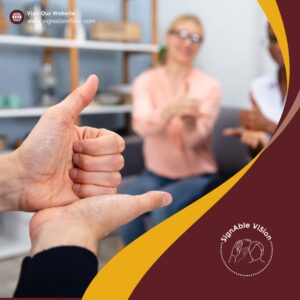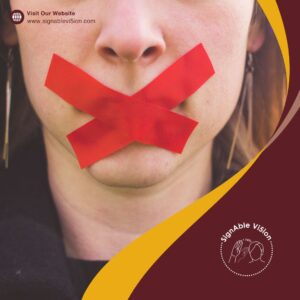A question that shouldn’t be controversial, but somehow still is.
There’s a hot debate simmering in Canada’s sign language community, and it’s long overdue.
Who should be teaching ASL?
Canada Isn’t the U.S.
Let’s start here: American Sign Language (ASL) in Canada is not the same as in the U.S.
Sure, we share many signs, but our regional signs, cultural references, and community history are distinct. ASL in Canada evolved within Deaf schools, local Deaf clubs, and cross-province interactions that shaped our unique identity.
Yet, many of the online learning apps, YouTube channels, and “beginner courses” Canadians stumble onto are led by people outside of that experience, often non-Deaf instructors or Americans who don’t represent the Canadian Deaf community.
The Unwritten Rule, and Why It Exists
Within Canada’s Deaf community, there’s an unwritten rule:
If you’re not Deaf, you shouldn’t be teaching ASL.
This isn’t gatekeeping; it’s about cultural integrity. ASL isn’t just vocabulary or grammar, it’s language + culture + lived experience.
It’s how Deaf people navigate a world built for hearing people.
Even interpreters, though skilled and valued professionals, should not be teaching ASL. Their role is to bridge communication between languages, not to lead instruction in a language that isn’t theirs by lived experience. Teaching ASL requires a deep cultural understanding that can only come from within the Deaf community itself.
When non-Deaf instructors teach ASL, even with good intentions, they often miss what makes the language alive: the cultural context, community norms, and everyday authenticity that you can’t “research” into existence.
It’s like learning Italian from someone who’s never been to Italy and only reads phrasebooks. Technically correct, maybe. Culturally, not even close.
Do Your Homework
There are plenty of Deaf instructors across Canada who bring that lived connection into their teaching.
But yes, not every Deaf person is automatically a great teacher either.
Whether they’re Deaf or not, look for certified professionals who are connected to the community, who continue to grow, and who use current, accessible, and culturally grounded resources.
Certification matters. It shows accountability, professional training, and a commitment to teaching ASL responsibly, not just signing casually on weekends or copying from online videos.
If your signing hasn’t improved in months, if you’re stuck repeating “Hello, how are you?” and still missing natural flow, your instructor might not be the right fit.
Why This Matters
When non-Deaf instructors dominate the ASL space, it takes away visibility and employment from Deaf professionals who should be leading these programs.
It also confuses students, who may think they’re learning “authentic ASL” when in reality, they’re learning a watered-down, English-influenced version.
And yes, it’s easier for some hearing people to step into those roles, they can “talk” their way through, literally. But easier doesn’t mean right.
The Real Goal
Learning ASL isn’t just about signs, it’s about joining a community and respecting its roots.
If you truly value inclusion, make sure the people guiding you live the language they teach.
Because language without culture is empty.
And ASL without Deaf leadership loses its soul.



